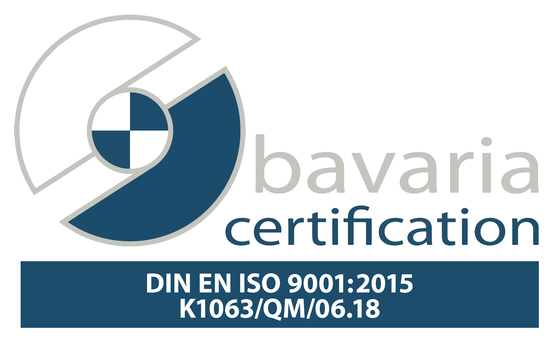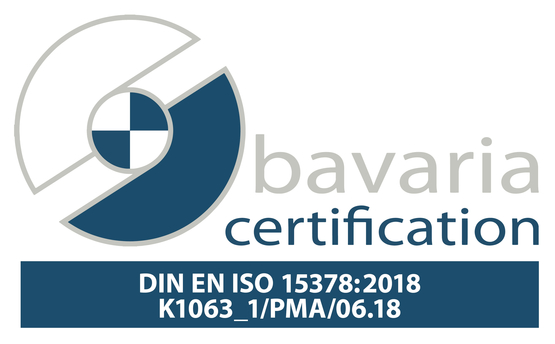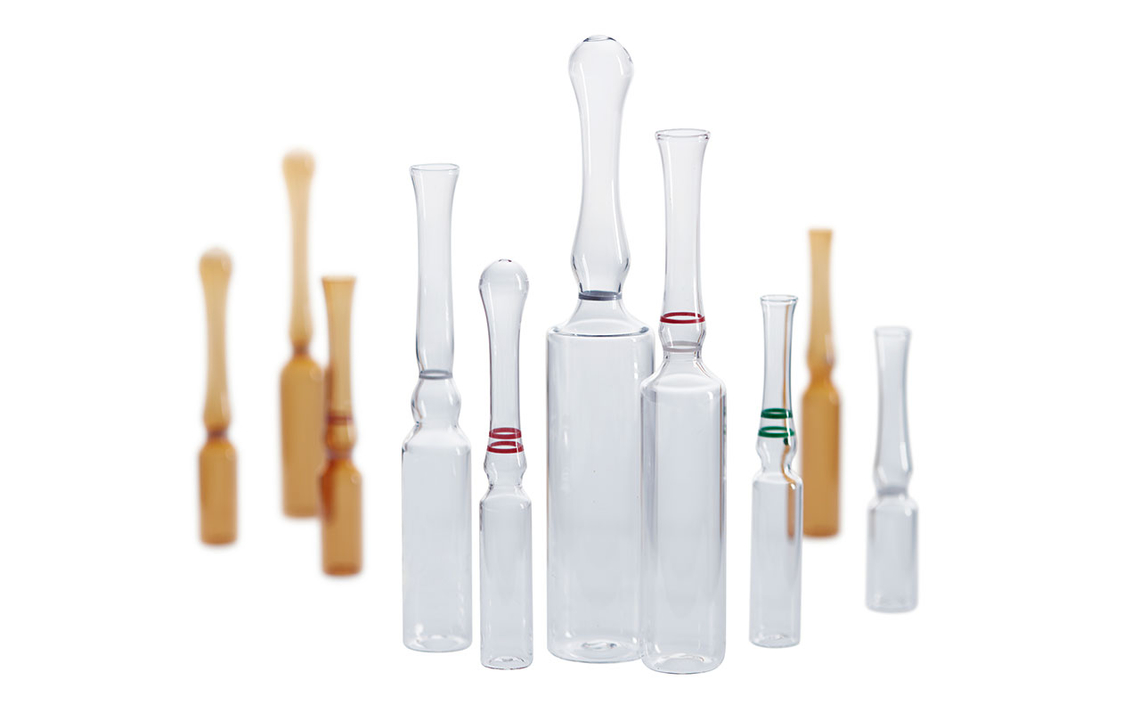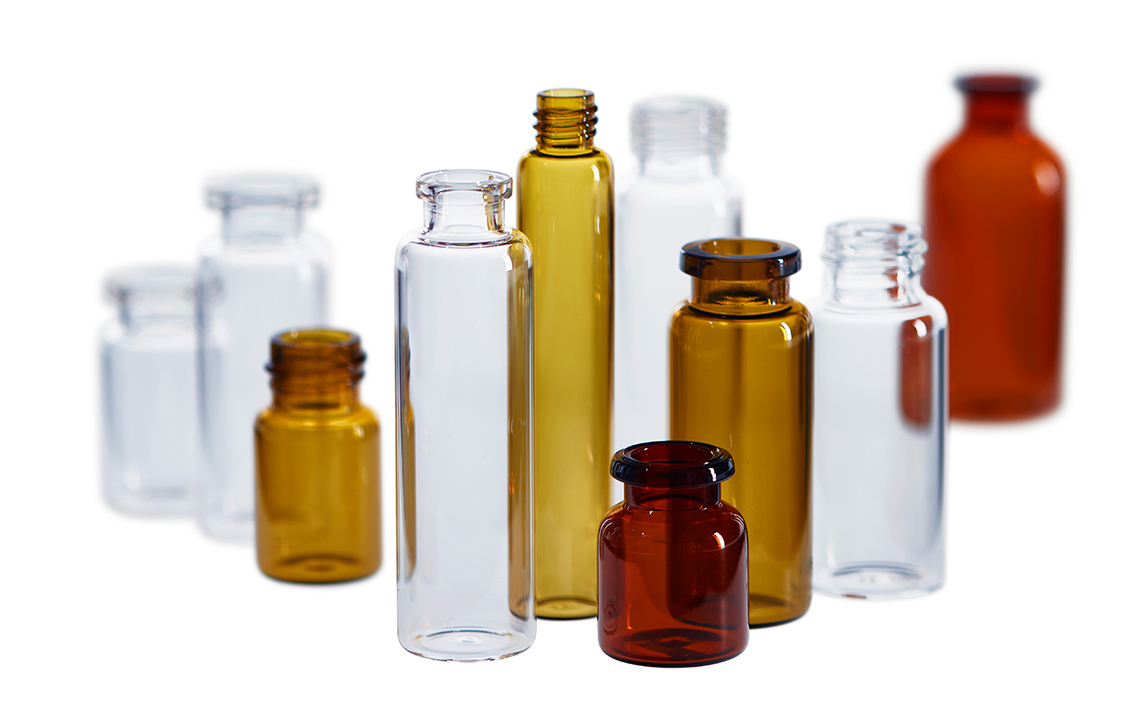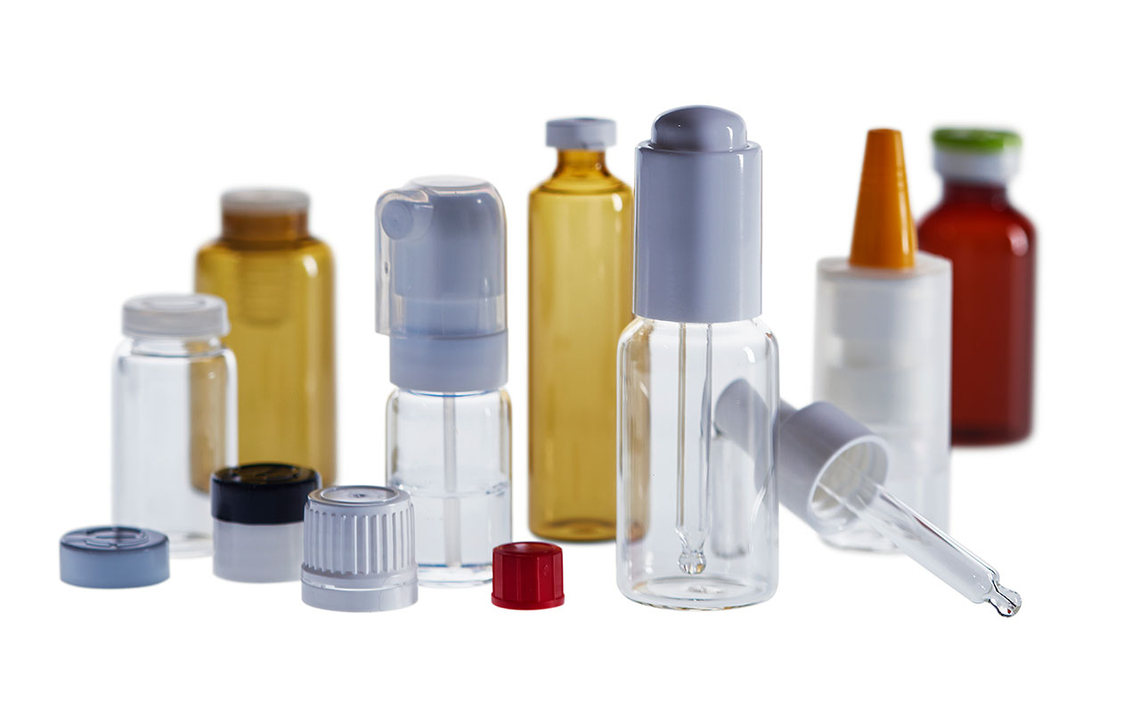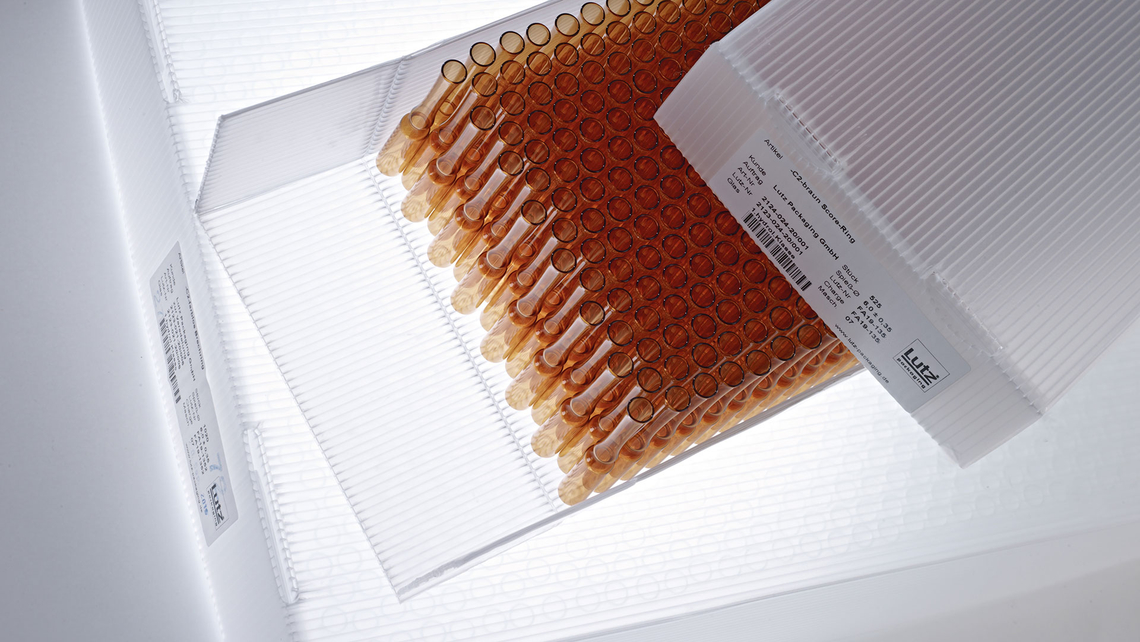The all-round talent glass was and is the preferred material for pharmaceutical primary packaging. As an inert material, glass provides protection for a wide variety of medicines by preventing gases or other volatile substances from penetrating through the glass wall or reaching the medicine from outside. Similarly, the use of glass as primary packaging material prevents the likelihood of a reaction between the drug and the glass itself. Glass used in the pharmaceutical industry is classified in hydrolytic classes I - III. Type I represents the highest quality and is a very chemical and temperature resistant glass, which is why it is used for pharmaceutical products such as infusions and injections. In contrast, type III glasses are more suitable for preparations that are not intended for parenteral use.
Certified production
For all products supplied, Lutz Packaging ensures consistent product quality and offers highest standards. Proof of these demanding quality standards is, for example, the certifications: DIN EN ISO 9001:2015 and DIN EN ISO 15378:2018, which guarantees the highest precision and quality of our products. Furthermore, our production technology can be flexibly and quickly adjusted to specific production tasks and quantities. This enables us to fulfil your requests quickly and reliably.


